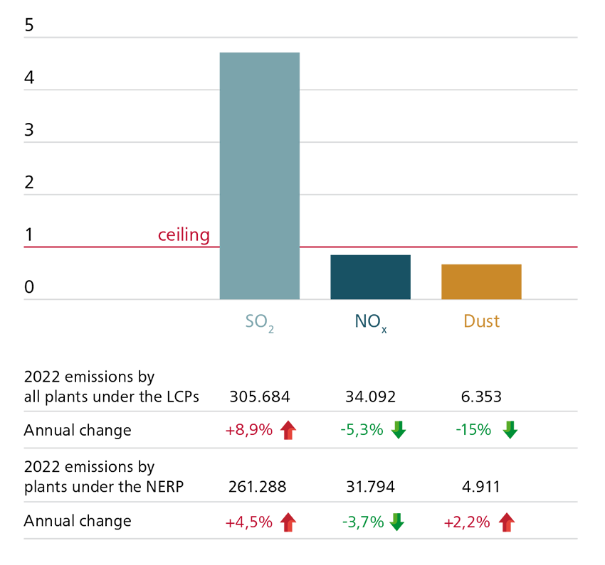
Serbia

 Membership
Membership
-
Overall implementation performance
Overall implementation performance 2023
CLUSTER INDICATORS 2023 HIGHLIGHTS AND NEXT STEPS .2023-12-08-13-48-12.png)
Markets and integration Amendments to the Serbian Energy Law as of July 2023 allow for the compliant unbundling of the electricity and gas transmission system operators. The intraday electricity market was launched in July 2023. Serbia should focus on the transposition and implementation of the Electricity Integration Package as a precondition for the coupling of its short-term markets. Serbia should certify the gas transmission and storage operators, grant third party access at the interconnection points, and remove any other obstacles to new market entrants. 
Decarbonising the energy sector Serbia submitted its draft NECP within the prescribed deadline and adopted its long-term strategies on low-emission development and building renovation strategy. Serbia revised its Renewable Energy Law and conducted an inaugural auction for renewable energy. Serbia should adopt the final NECP in line with the Recommendations provided by the Secretariat. Ensuring energy security Although the Gas Storage Regulation is yet to be transposed, Serbia fulfilled its storage targets. Serbia should transpose the Security of Gas Supply and the Storage Regulations. Regulation (EU) 2019/941 on Risk-preparedness in the Electricity Sector should be transposed and its implementation should start with the designation of a competent authority. Improving the environment Serbia made moderate progress in the area of environment. Environmental impact assessments are still not regulated in a compliant manner, which should be addressed without further delay. Performance of authorities No progress was made with regards to the enforcement by AERS of unbundling of gas transmission operators or third party gas access to gas interconnection points. status: November 2023
source: compiled by the Energy Community Secretariat -
Dispute settlement cases
Dispute settlement cases
By end of the reporting period, Serbia had five dispute settlement cases.
Procedures under Article 91 EnCT where the procedure has been closed with the adoption of a Ministerial Council decision, but the breach has not been rectified yet. ECS-23/21 Environment ECS-9/23 Environment Procedures under Article 92 EnCT where the breaches are not rectified despite adoption of Ministerial Council decisions establishing a serious and persistent breach or imposing measures under Article 92 of the Treaty. ECS-9/13S Gas ECS-10/17S Gas ECS-13/17S Gas status: November 2023
source: compiled by the Energy Community Secretariat
-
Primary fuel mix and available energy
2021 Fuel mix in primary production of energy (in ktoe)
status: November 2023
source: EUROSTAT
2021 Gross available energy per product (in ktoe)
status: November 2023
source: EUROSTAT
-
Primary supply of electricity
Fuel mix and primary supply of electricity
* Net export [-]: negative value
status: November 2023
source: Ministry of Mining and Energy, compiled by the Energy Community Secretariat
-
Implementation by market indicators
Implementation by electricity market indicators
Implementation by gas market indicators
* due to lack of gas market, the average excludes Kosovo* and Montenegro. The gas performance values are calculated on the basis of seven Contracting Partiesstatus: November 2023
source: compiled by the Energy Community Secretariat
-
Average annual prices
Average annual prices of electricity for end users per component
Average annual prices of gas for end users per component
source: EUROSTAT
Implementation by security of supply indicators
November 2023
source: compiled by the Energy Community Secretariat
Decarbonising the energy sector
-
Implementation by decarbonisation indicators
Implementation by governance indicators
Implementation by renewable energy indicators
Implementation by energy efficiency indicators
November 2023
source: compiled by the Energy Community Secretariat
-
2030 renewable energy targets and capacities
Targets for share of energy from renewable sources
Contracting Party 2005 Share of energy from renewable sources 2020 Target for share of energy from renewable sources 2030 Target for share of energy from renewable sources Serbia 21,2% 27% 40,7% source: Decision 2022/02/MC-EnC on incorporating Clean Energy Package into Energy Community acquis
2022 Total capacities of renewable energy (MW)
status: November 2023
aource: Ministry of Mining and Energy
-
2030 energy efficiency targets, energy consumption and trends
2030 Primary and Final Energy Consumption (PEC) Targets
Contracting Party 2020 primary energy consumption (PEC) 2020 final energy consumption
(FEC)2030 primary energy consumption (PEC) 2030 final energy consumption
(FEC)Serbia 15,18 Mtoe 9,08 Mtoe 14,94 Mtoe 9,54 Mtoe source: Decision 2022/02/MC-EnC on incorporating Clean Energy Package into Energy Community acquis
2021 Primary Energy Consumption (PEC) and Trends
2021 Final Energy Consumption (FEC) and Trends
Energy intensity, 2021 value and trends: 0,40 ktoe/mil EUR, ↓ -5,4%
status: November 2023
source: EUROSTAT 2023 data, NECP and 2022 Ministerial Council Decision
-
Implementation by environment indicators
Implementation by environment indicators
November 2023
source: compiled by the Energy Community Secretariat
-
LCPD implementation
Installations Under the Large Combustion Plants Directive
Type of plants Number on plants 
of plants falling under the LCPD 17 
of which opted out plants 4 
of which plants falling under the NERP 13 source: compiled by the Energy Community Secretariat
2022 emissions versus NERP ceilings
source: compiled by the Energy Community Secretariat
Amount of operational hours used from opt-out period
Plant Expected expiry of opt-out period Remaining hours Operating hours consumed in 2018 - 2022 Termoelektrana Kolubara A3
(boilers 3, 4, 5)April 2023 1.165 
18.835 Termoelektrana Morava EXPIRED 0 
23.051 Termoelektrana Kolubara A3
(boiler 1)April 2023 1.122 
18.878 Termoelektrana Kolubara A5 November 2023 3.701 
16.299 Calculations for the expected expiry of the opt-out period are based on 2018 - 2022 average load factor.
source: compiled by the Energy Community Secretariat -
